The relic of Bir Hooker: Analysis
Continued from
The relic of Bir Hooker: The Discovery
Research report by Gregor Spörri: Initial analyses
The photo taken from above together with the banknote allows me to determine the exact size of the object. When stretched out, the finger measures 38.4 centimeters. The middle finger of an adult is about eight to ten centimeters long. The giant who once owned the finger must therefore have been around five to six meters tall.
A seemingly abstruse idea, but it is in line with numerous historical traditions.
Further information: Reports on giants.

The (chopped-off) bone protruding from the tissue at the base of the finger is remarkably thick-walled, comments Swiss mummy expert Frank J. Rühli on the photos of the relic.
This indirectly confirms my assumption that this giant must have had an extremely massive body, as was and is usual with other colossi: dinosaurs, elephants, whales, etc.
Just as interesting: the distinctive indentation on the underside of the bone also exists in human finger bones.
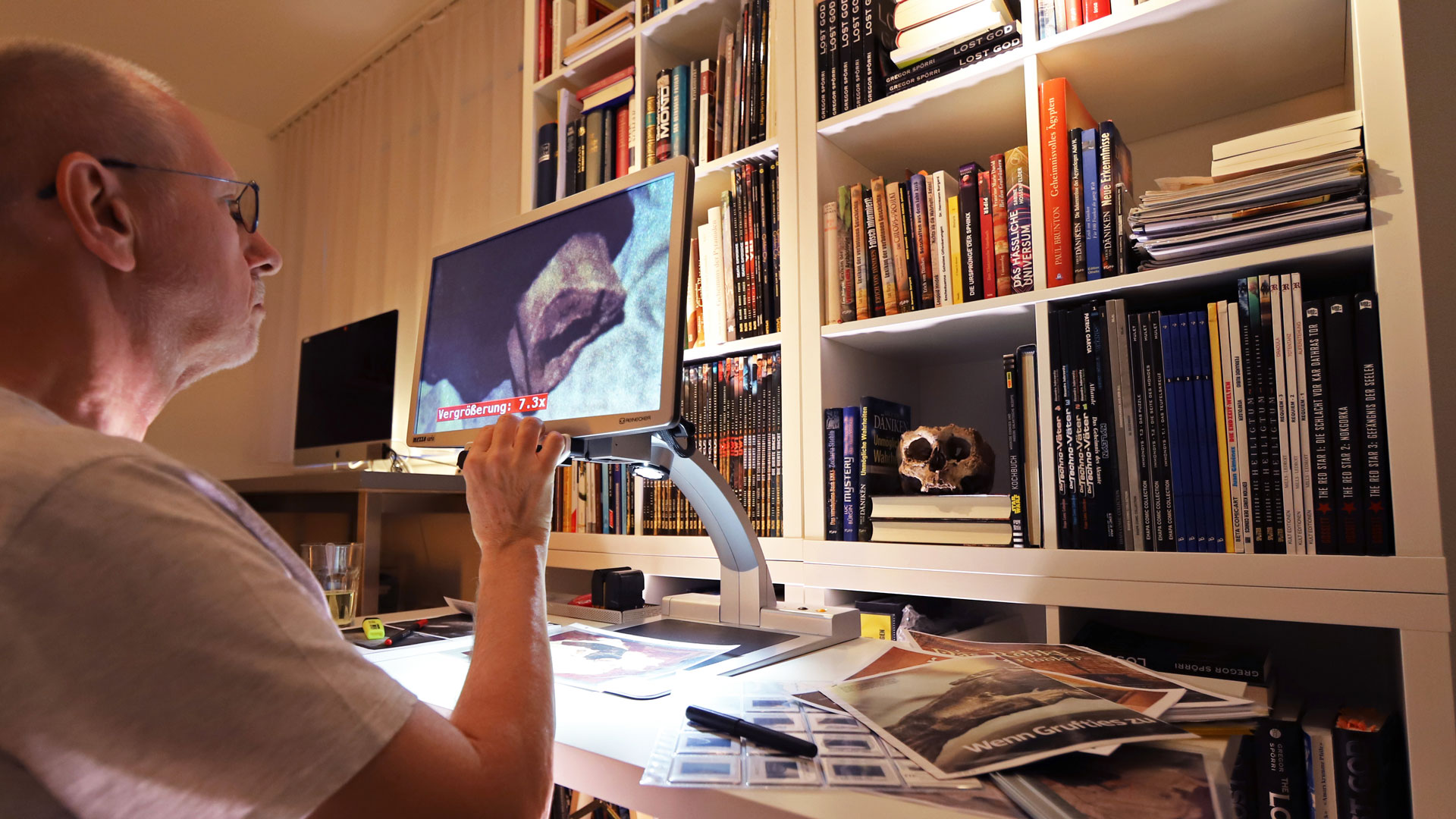
It is astonishing that the giant finger has exactly the same anatomical proportions as a human finger. However, the object is naturally mummified (dried out), so that the original massive form is only recognizable on closer inspection (from the skin).

Everything that makes up a human finger is there, only much larger: proximal phalanx, middle joint and middle phalanx, distal phalanx and distal phalanx, fingernail and nail bed …

The “bottom” side of the object is flattened. Where the finger was severed from the hand, the tissue is displaced to the side and upwards. This “bruising” indicates that the finger has been in contact with the skin for a longer period of time (possibly longer). over the period of his natural mummification (desiccation) on the same side. The loss of fluid in the tissue led to the formation of in the hairless, thick skin dents (depressions).
If the finger was cut off when the body was still “fresh”, it can be any finger from either hand.
If the finger was separated from the (mummified) body at a later date, it can only be the index finger from the right hand due to the way it was positioned and crushed.
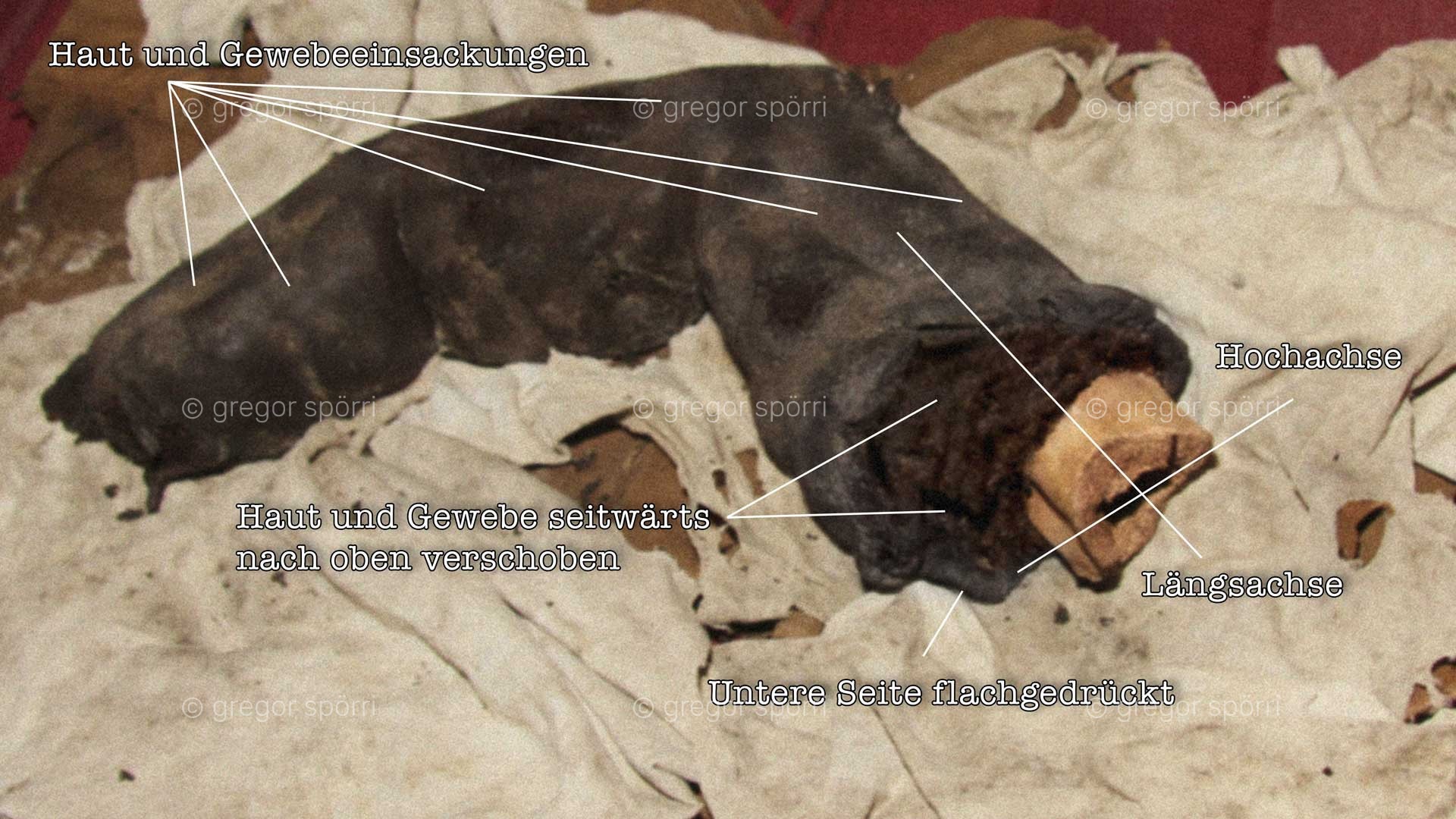
The finger was probably severed from the hand below the metacarpophalangeal joint with a machete or similar. First an all-round cut was made. Then the flesh was scraped off the bone with the blade. Finally, the bone was severed. The finger and bone show several corresponding marks.
In addition, there is a broken fingernail, skin abrasions, mold infestation, nail and feeding marks, etc.
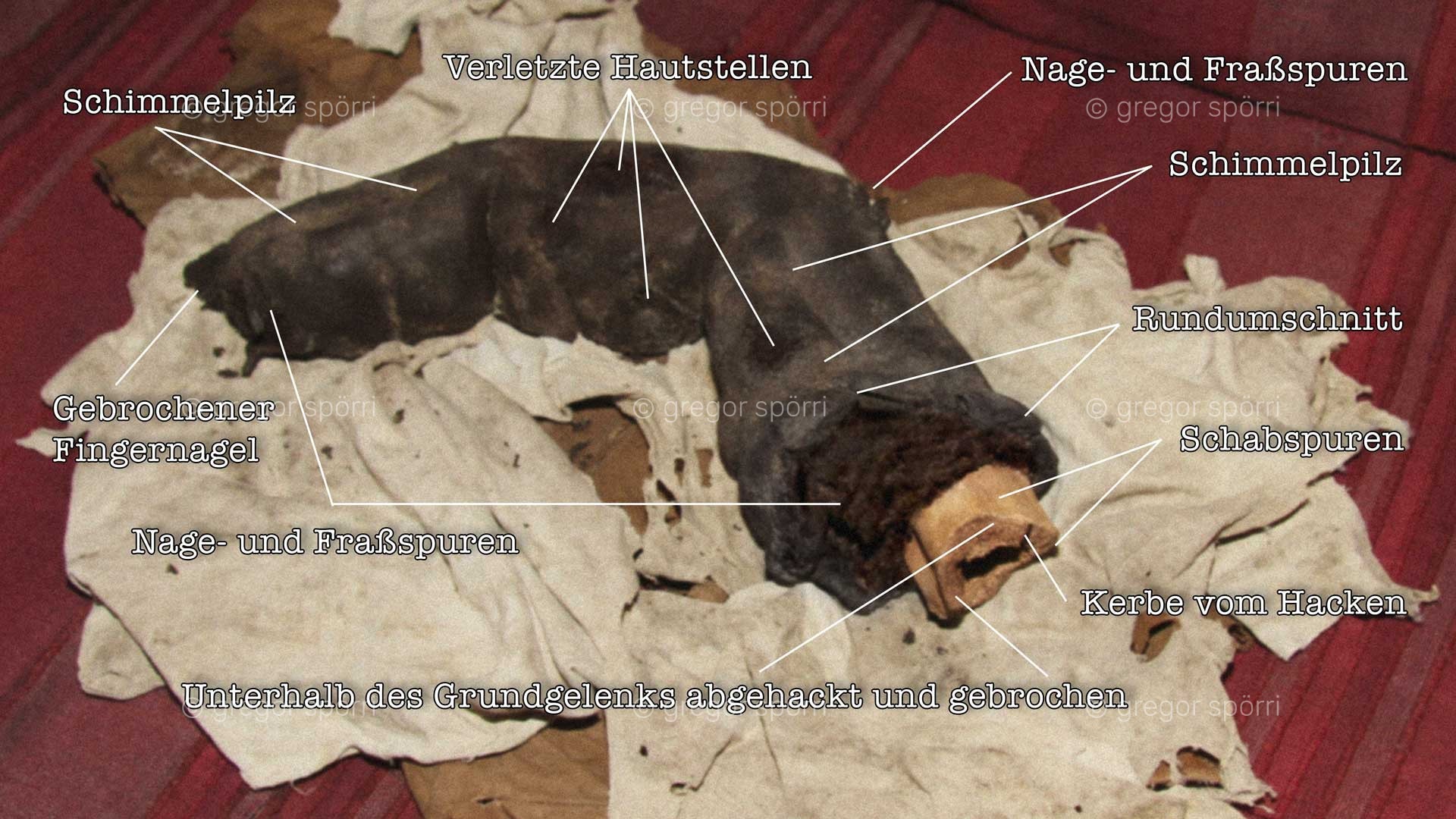
Both Professor Rühli and Dr. Benecke have considered a possible macrodactyly disorder in their image diagnosis .
However, there are several reasons why Bir Hooker’s giant finger cannot be a macrodactyly :
1) This disease is primarily characterized by pathological enlargement of the soft tissue.
2) Bone growth is less affected. If it does, this usually manifests itself in a pathological enlargement of the corresponding bone parts (see x-rays).
3) In the relict, the bone is anatomically correct and matches the proportions of the surrounding tissue mass.
4) A bone as enlarged and thickened as the relic of Bir Hooker would not possibly fit on a human hand.
5) Parts of the body affected by macrodactyly are not only enlarged but also abnormally deformed. By contrast, the proportions of Bir Hooker’s giant finger look completely normal.
6) The sometimes clumsy shape of the finger can be explained as follows:
A) Tissue and skin are bagged during the period of natural mummification.
B) The giant had a massive, rather clumsy physique in the manner of King Kong, Hulk or similar.
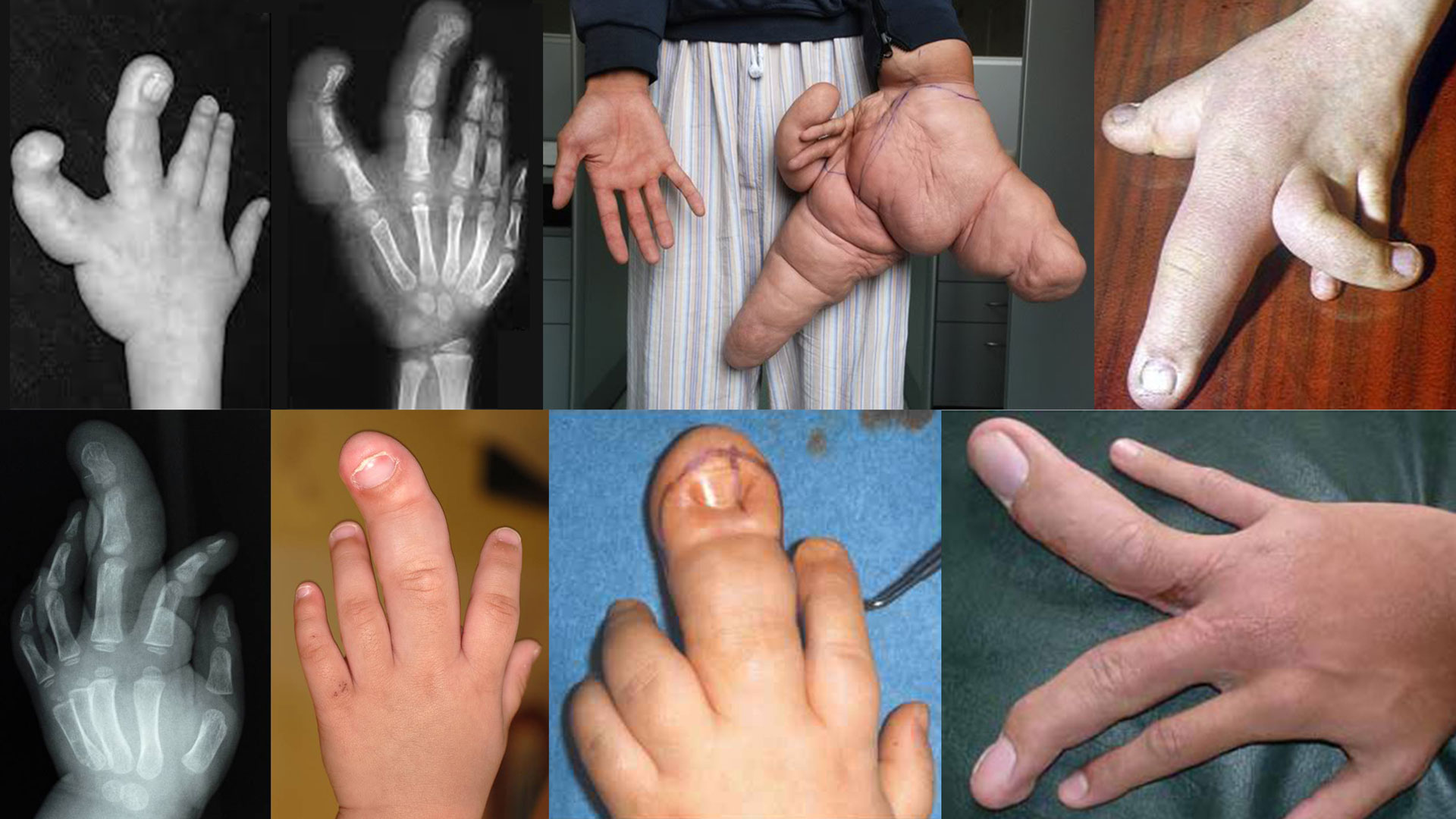
Due to water damage, only a poor copy of the photo of the X-ray image, on which the finger is shown in its original size, still exists. Nevertheless, the massive bone structure can be recognized, which indicates the giant’s powerful stature.


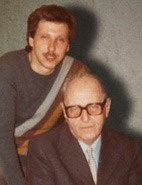
Dr. Carl Bader, natural scientist and former biology teacher of Gregor Spörri, literally throws up his hands when looking at the pictures and explains: "This thing really does look like the mummified finger of a humanoid giant, but according to evolutionary biology, such creatures have never existed." Nevertheless, Dr. Bader has Spörri write letters, which he sends to scientific colleagues together with the photos of the finger. However, there is no feedback or inquiries. Apparently this "paleontological madness", as Dr. Bader calls the relic, is so far removed from the academic doctrine of the origin of species that no one wants to burn their fingers on it. At a further meeting in September 1995, Dr. Bader Spörri explained that scientists generally find it difficult to do things that do not conform because they always have to consider their reputation, career, prevailing doctrines, sponsors, etc. in all their actions and statements.
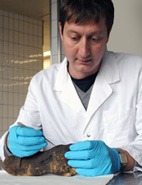
The Swiss mummy expert Prof. Dr. Dr. med. Frank J. Rühli from the University of Zurich has already examined the glacier mummy "Ötzi" and the celebrity pharaoh "Tutankhamun". Rühli had the following to say about Bir Hooker's relic: "An exciting case. Unfortunately, it is not possible to make a definitive and well-founded assessment on the basis of the photos. However, the fingernail, its embedding in the tissue, the surface texture and the visible skin tissue injuries look very natural. The "finger" actually appears significantly enlarged. My primary differential diagnosis is an extreme form of macrodactyly (Proteus syndrome or similar). The bone stump seems a little strange to me. It reminds me more of an animal bone, because it looks too thick-walled for a "human finger". Since no cross-sectional images of the bone exist, my statement is purely speculative. If the object is a forgery, which cannot be definitively ruled out, it is a very well-made work. I recommend consulting a veterinarian to clarify the bone issue in more detail."

The well-known German criminal biologist and specialist in forensic entomology, Dr. Mark Benecke, commented on the photos of the relic as follows: "Unfortunately, the photos do not allow us to say exactly what kind of object it is. Stories of desiccated beings, which are also presented and may very well consist of bones and skin, are often told from or into this area. I consider it feasible to investigate whether the tissue is human, animal or other as soon as tissue or material samples are available. In view of the known forgeries, but also a possible tissue alteration (macrodactyly etc.), nothing can be said on the basis of the photos. Tissue examination with fine sections and DNA, on the other hand, should be feasible or at least enable certain assumptions to be ruled in or out. Unfortunately, without tissue or material samples, I can't say any more about this case."
Back to
Mystery research